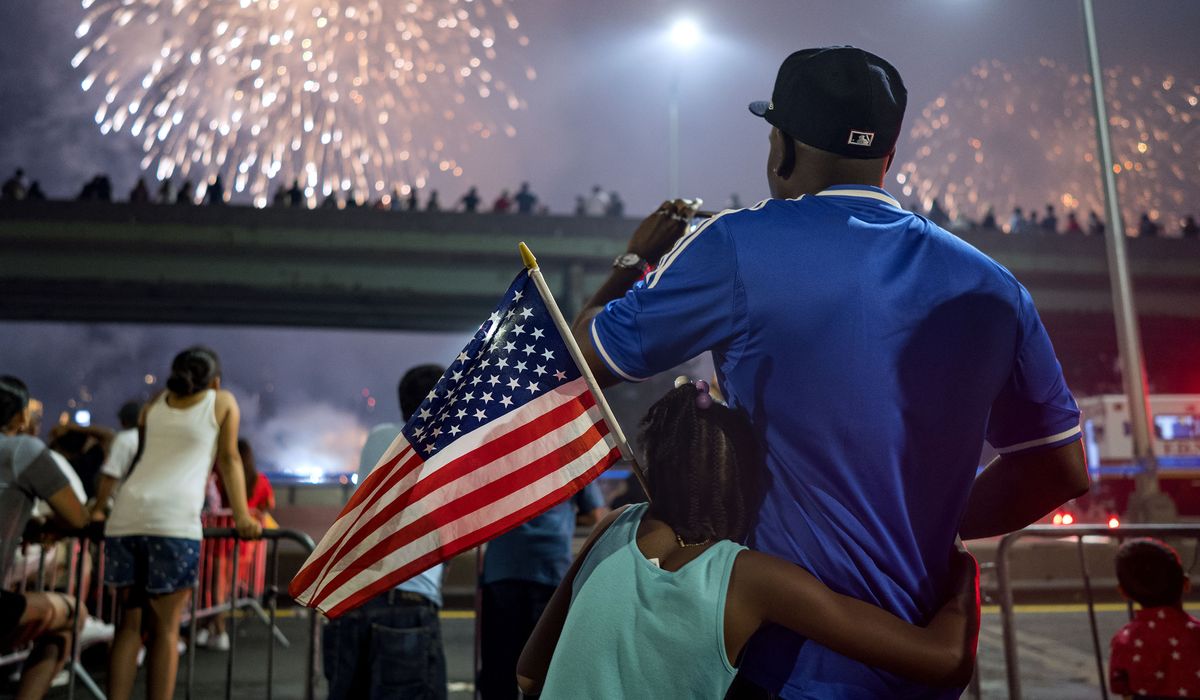
This Independence Day, “bombs bursting in air” may be few and far between in some neighborhoods: Port delays and a scarcity of global containers are contributing to a shortage of consumer fireworks, retailers say.
“There is definitely a shortage of fireworks in the U.S. this year caused by the issues that have developed with the logistics of getting the products out of China and into the U.S.,” said William Weimer, vice president and general counsel of Phantom Fireworks, a major consumer fireworks retailer.
China manufactures most of the consumer fireworks sold in the U.S.
However, there is a shortage of containers in China to load the fireworks, meaning containers have not been returned to the country or to the fireworks warehouses where supplies can be loaded onto ships, Mr. Weimer said.
Another complication is a lack of space on container ships, which already have limited space set aside for “dangerous goods” such as fireworks.
U.S. ports, particularly along the West coast in places like Long Beach and Los Angeles, California, are clogged to the point that an arriving container ship has to wait offshore for days before getting into a port, industry experts say.
Additionally, there aren’t enough workers in ports to offload the products, Mr. Weimer added.
“Once the products are offloaded in a port, they often sit for weeks at a time before being loaded on rail or trucks to be taken to the ultimate destination,” he said.
Phantom Fireworks reportedly has had some containers at West Coast ports since mid-April that have not been loaded on rail for the trip east to the company’s Warren, Ohio warehouse as of Thursday.
Les Price, vice president of Atomic Fireworks, said his company’s supply is diminished from last year due to problems including lack of sufficient space on ocean-going vessels and congestion at Southern California ports.
Atomic Fireworks, which has retailers in several states including Alabama, Tennessee, Missouri and South Carolina, is selling products only to its current customers and trying to keep purchases limited to last year’s amount, Mr. Price said.
About a third of fireworks are caught up in the global supply chain mess, with supplies sitting at ports for weeks, according to Julie Heckman, executive director of the American Pyrotechnics Association (APA). She said they can’t get on the rail and that there aren’t truckers to pick up the supplies, noting the “struggle with movement” of containers arriving at the ports.
“The shortage is the result of the unprecedented sale and use of consumer fireworks during the pandemic,” Ms. Heckman said. “With the unprecedented demand and use and sales of consumer fireworks, which are legal in 49 states, plus the District of Columbia and Puerto Rico, most consumer fireworks retailers exhausted their inventory, which never happens.”
For this Fourth of July holiday, Ms. Heckman said she thinks demand for backyard fireworks will be higher than 2019 but might not be quite as high as 2020. Last year, about 405 million pounds of fireworks were used, up from 273 million pounds in 2019, she said. The sale of consumer fireworks nearly doubled from $1 billion in 2019 to $1.9 billion in 2020, APA data show.
“We had so many first-time users of consumer fireworks, that once they got a taste of that at-home celebration, they’re going to plan to do it again, this Fourth of July, especially those who aren’t planning to travel,” Ms. Heckman said. “I think the demand will still be there.”
Although fireworks retailers are stocked right now, she said the ability to restock through July 4 will be a very difficult challenge.
“We’ve missed the boat for products that should be here for the Fourth of July,” she said. “Anything sitting on the water or still stuck at the West Coast ports is not going to make it here in time.”
Phantom Fireworks anticipates receiving about 70% of what it ordered, which “should be sufficient to carry us through the season, Mr. Weimer said. The company has more than 75 permanent locations nationwide that are open year-round and more than 1,500 seasonal tents and stands throughout the U.S.
“Others may fare worse, particularly those retailers who procure their products domestically. In prior years, Phantom generally got what was ordered,” he said.
While supplies of consumer fireworks might be down, prices are definitely up. Skyrocketing shipping costs paired with additional transportation costs for containers have contributed to climbing prices, Mr. Weimer said. China’s currency, the yuan, also has increased 8% in value over the U.S. dollar since Phantom Fireworks placed orders in August, bumping up prices as well, he added.
Prices at Atomic Fireworks reportedly have increased 20% to 35% due to increased shipping costs.
TNT Fireworks, which sets up stands and tents in various places in Maryland, Virginia, West Virginia, Pennsylvania and Delaware, also has some product limitations this year compared to 2020, said company spokesperson Sherri Simmons. She said customers are encouraged to buy early in order to get the best selection.
“We are working tirelessly to address this year’s supply chain issues and will continue different initiatives in an effort to alleviate these issues in the future,” said Ms. Simmons. “This year’s delays were primarily due to the COVID-19 pandemic and high demand for consumer products, resulting in drastic global supply chain challenges.”
While there might be less backyard light shows, more professional firework shows this Independence Day holiday are a go.
Professional fireworks are not facing a shortage due to earlier COVID-19 pandemic shutdowns, which led to the cancellation of nearly all firework displays last year, said Ms. Heckman.
In 2019, there were about 16,000 professional firework displays across the country, according to Ms. Heckman. But last year, there were only a couple dozen events, she said, meaning that professional fireworks have been at max capacity for more than a year.
This year, a reported 70% of those 16,000 professional firework displays for July Fourth celebrations are scheduled to run.




